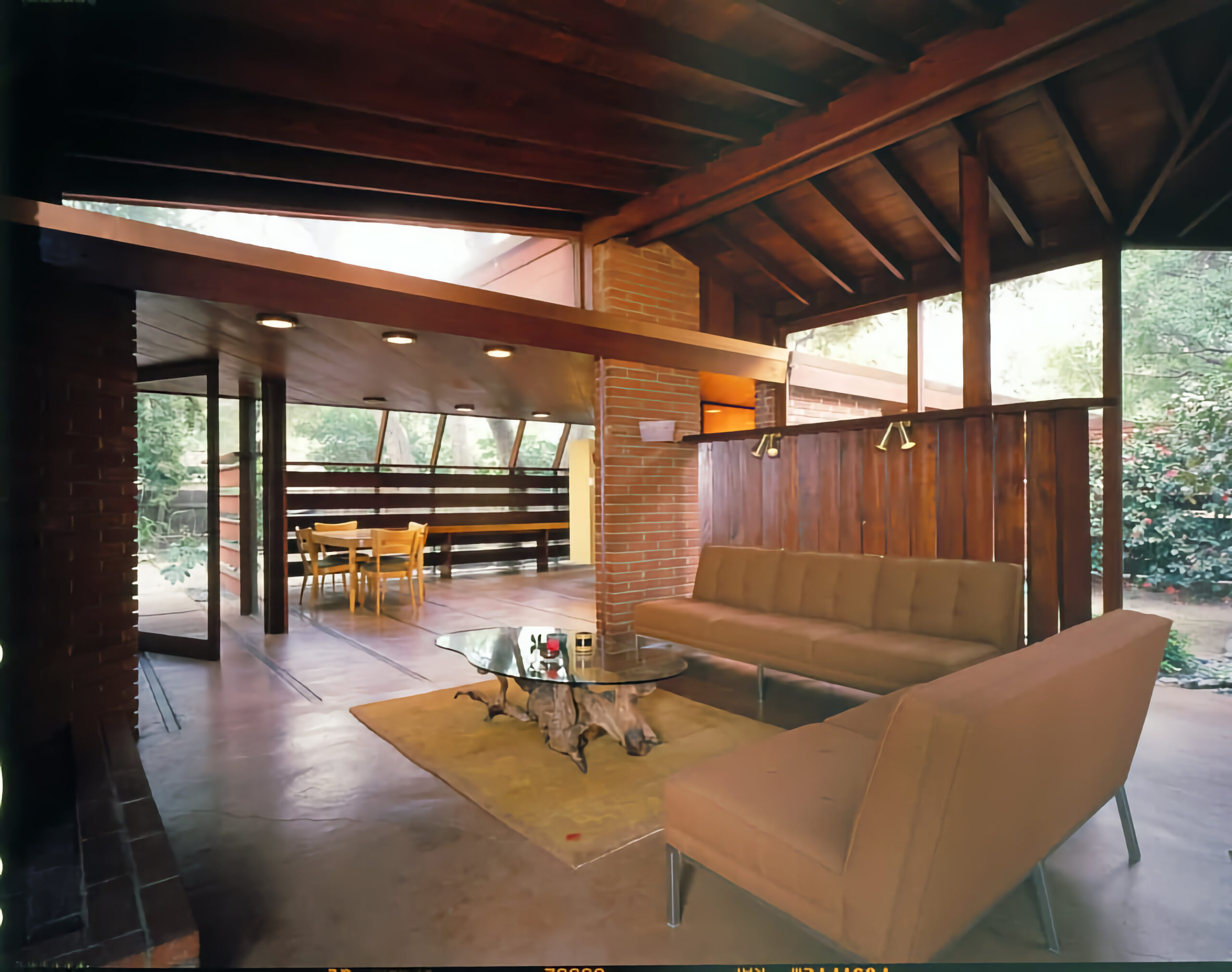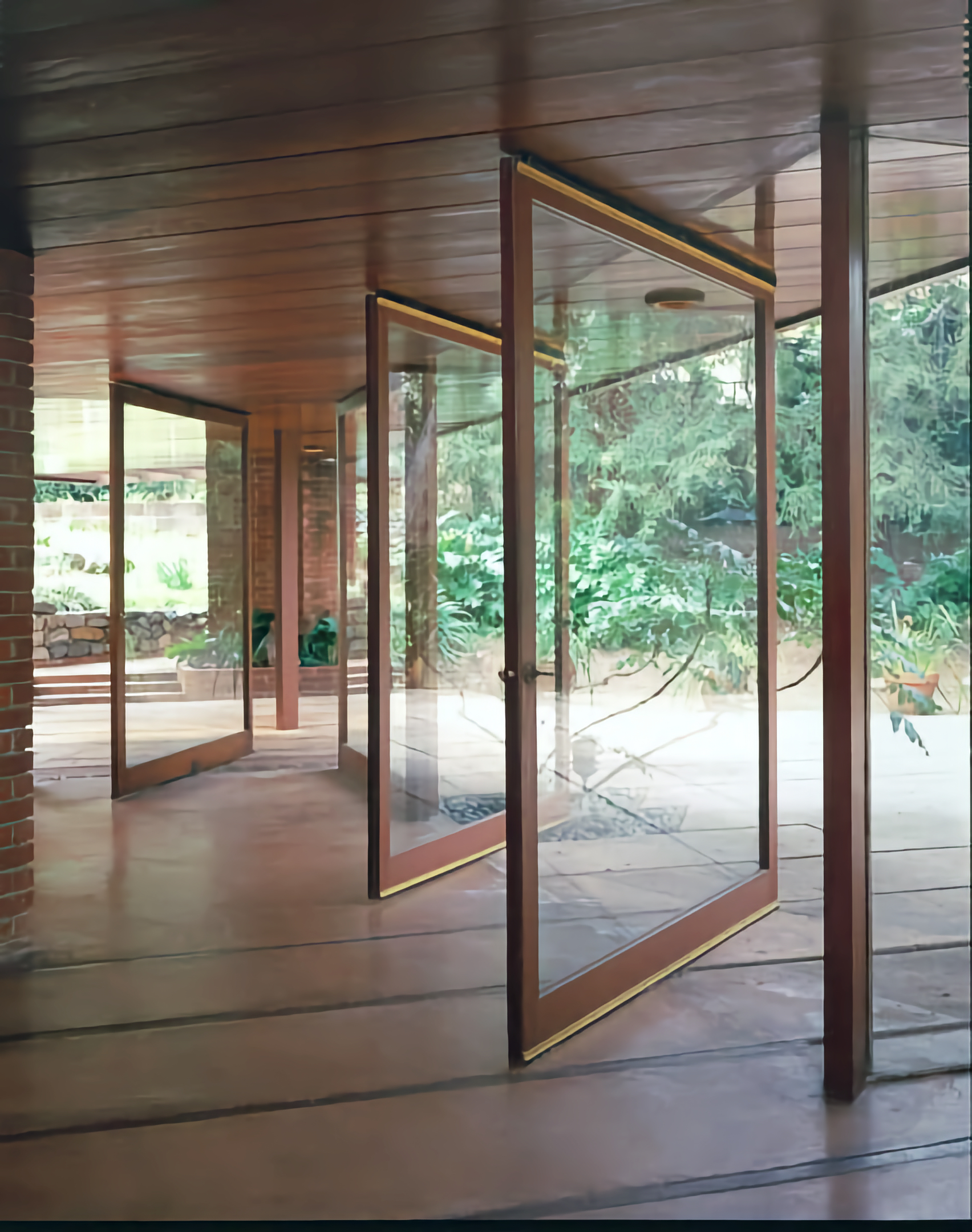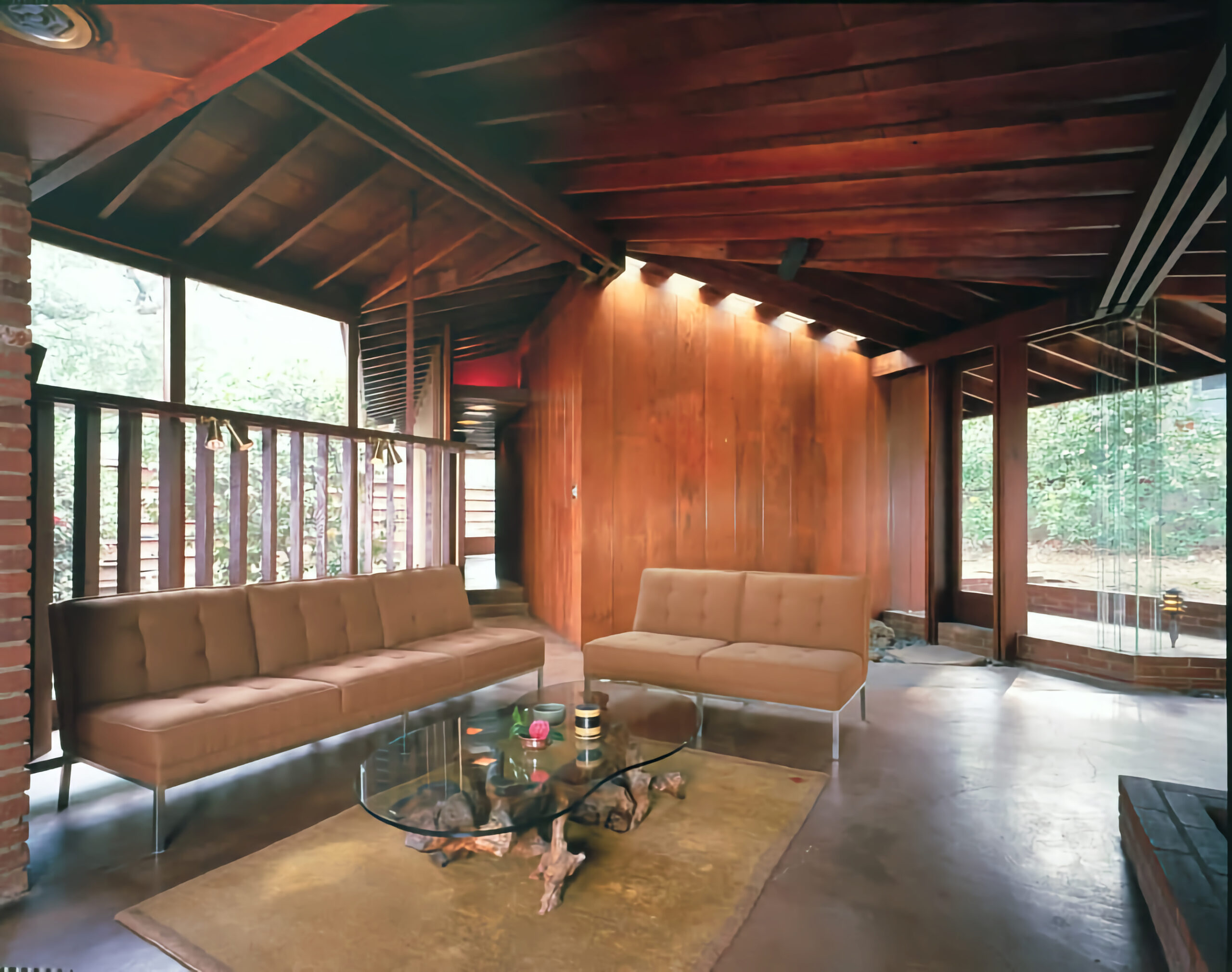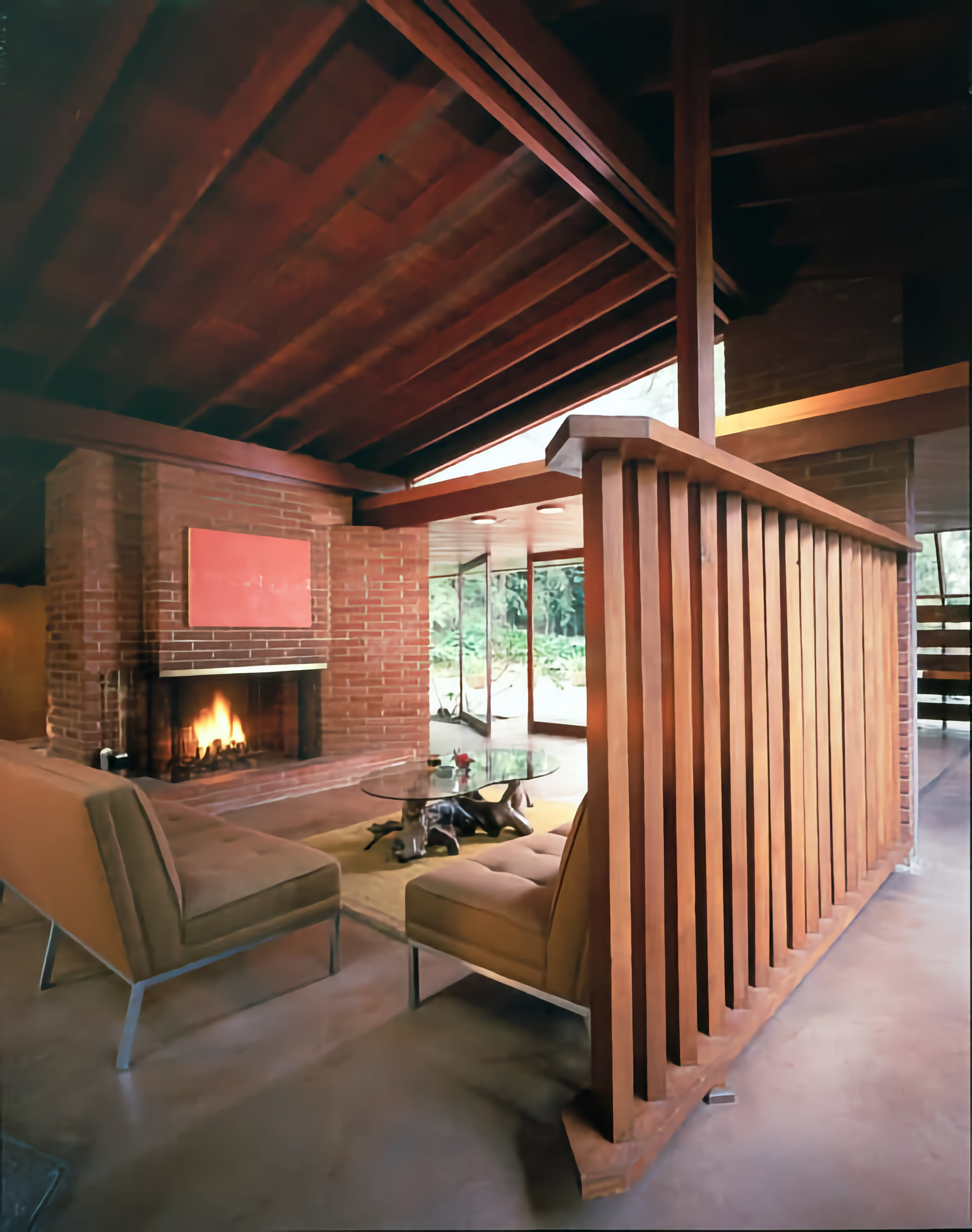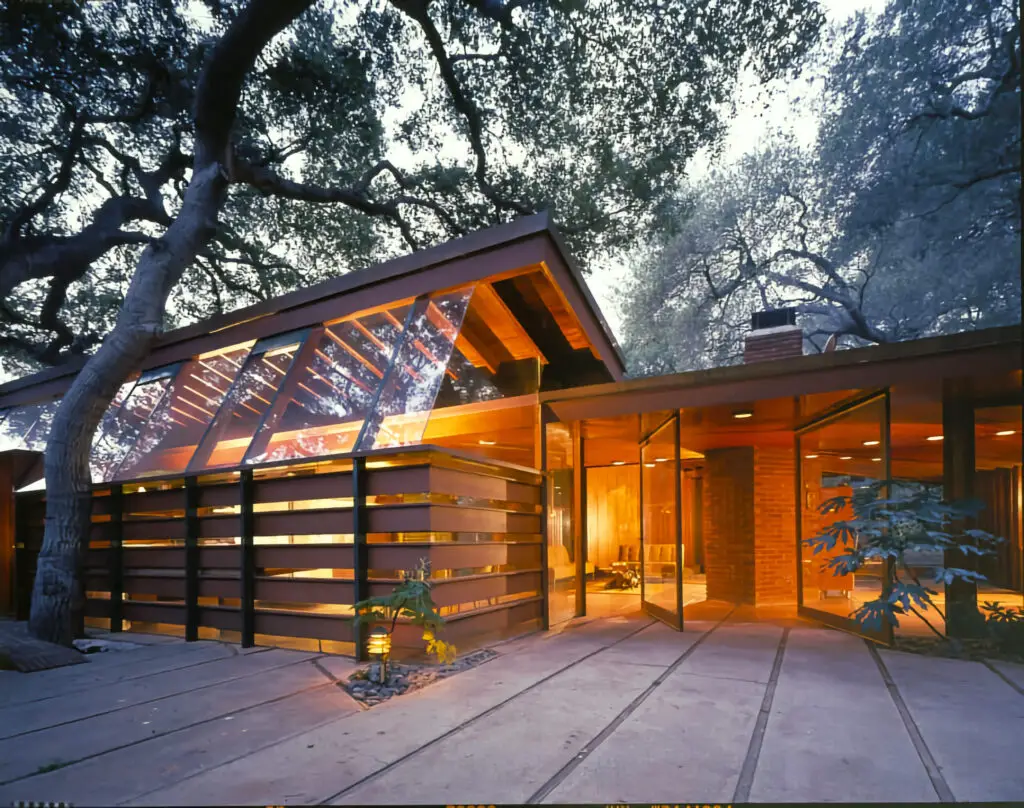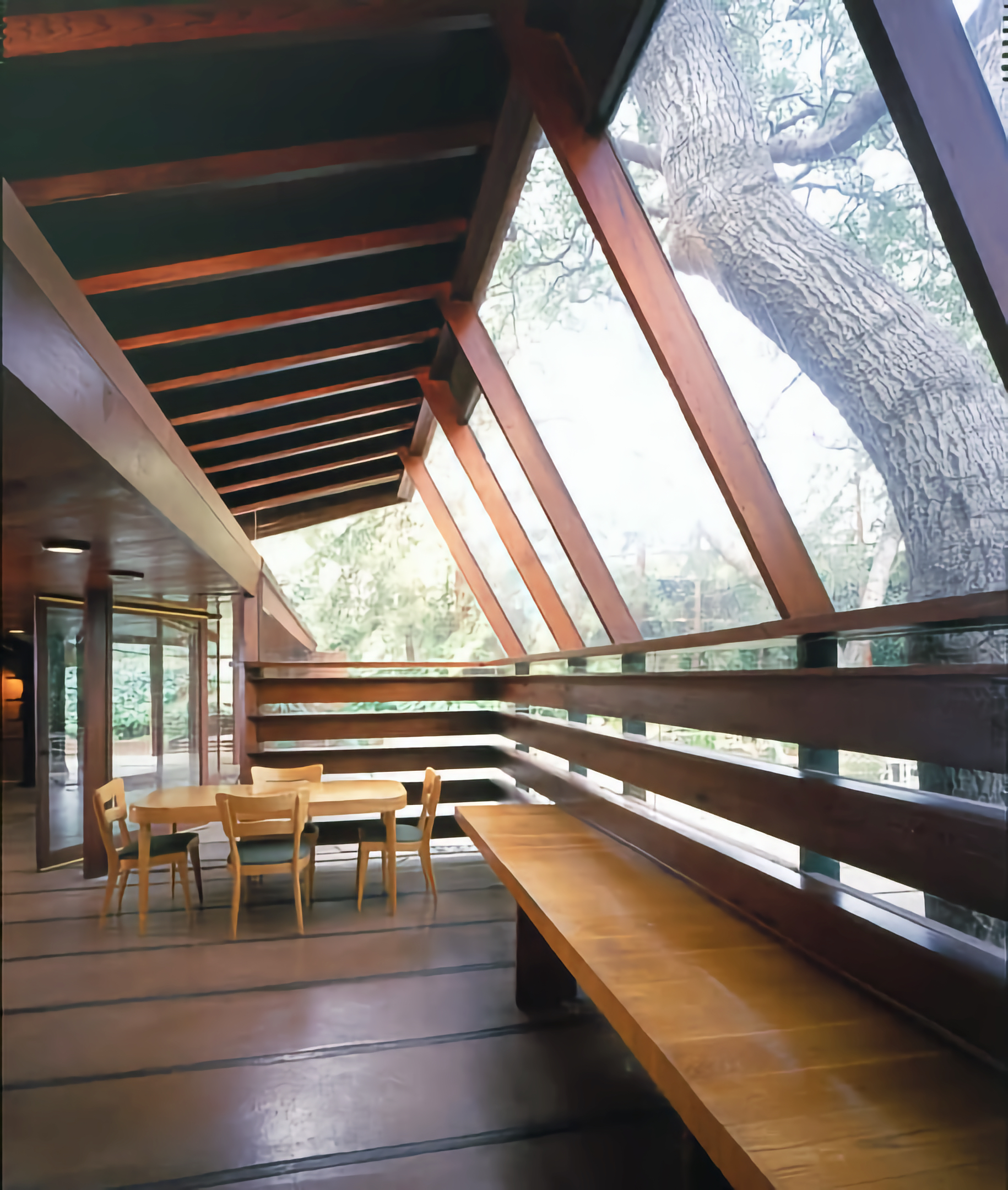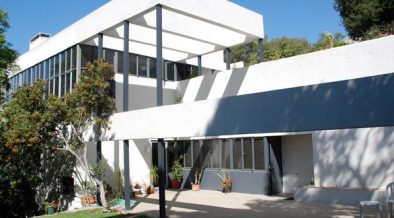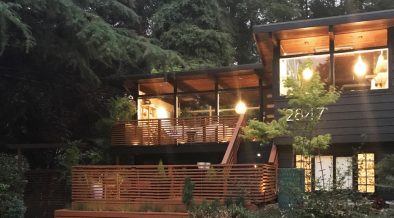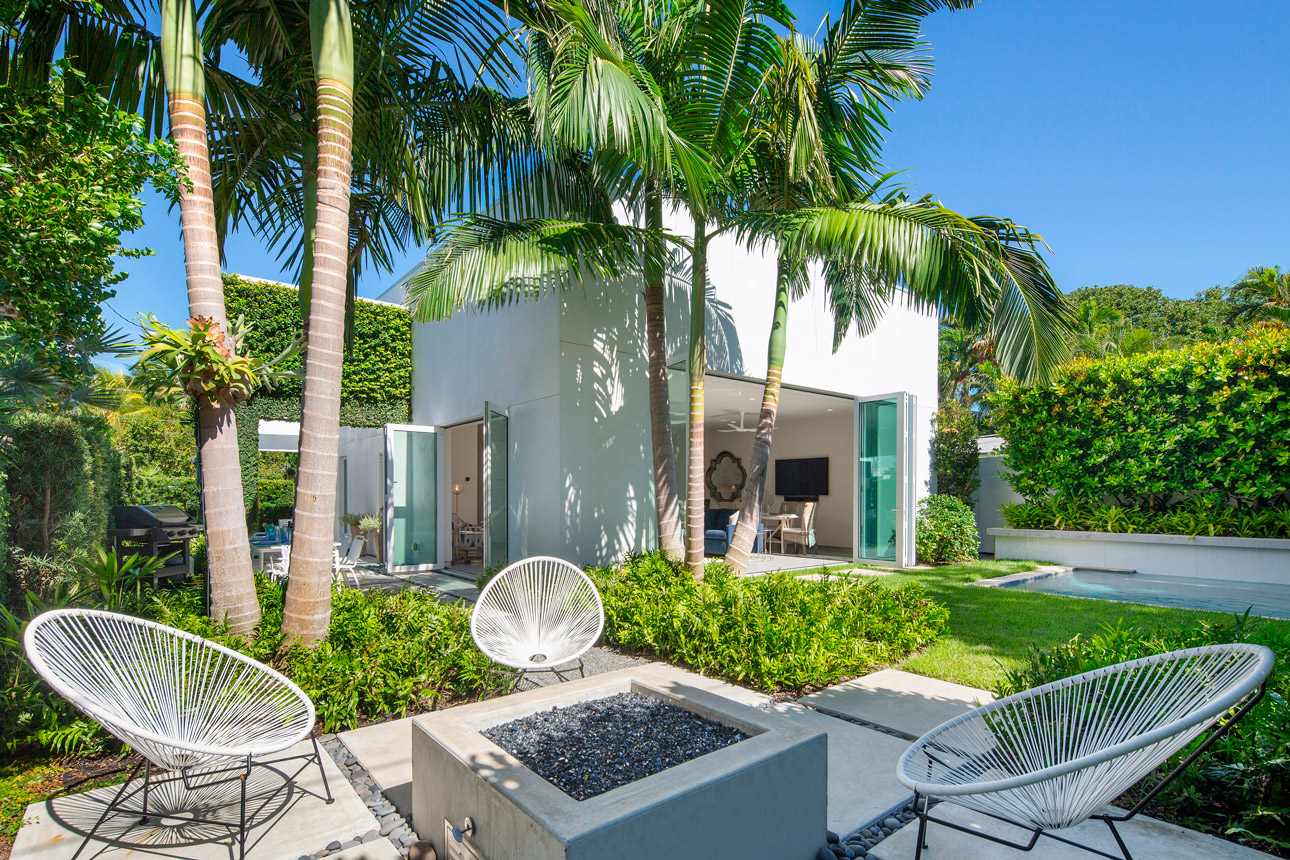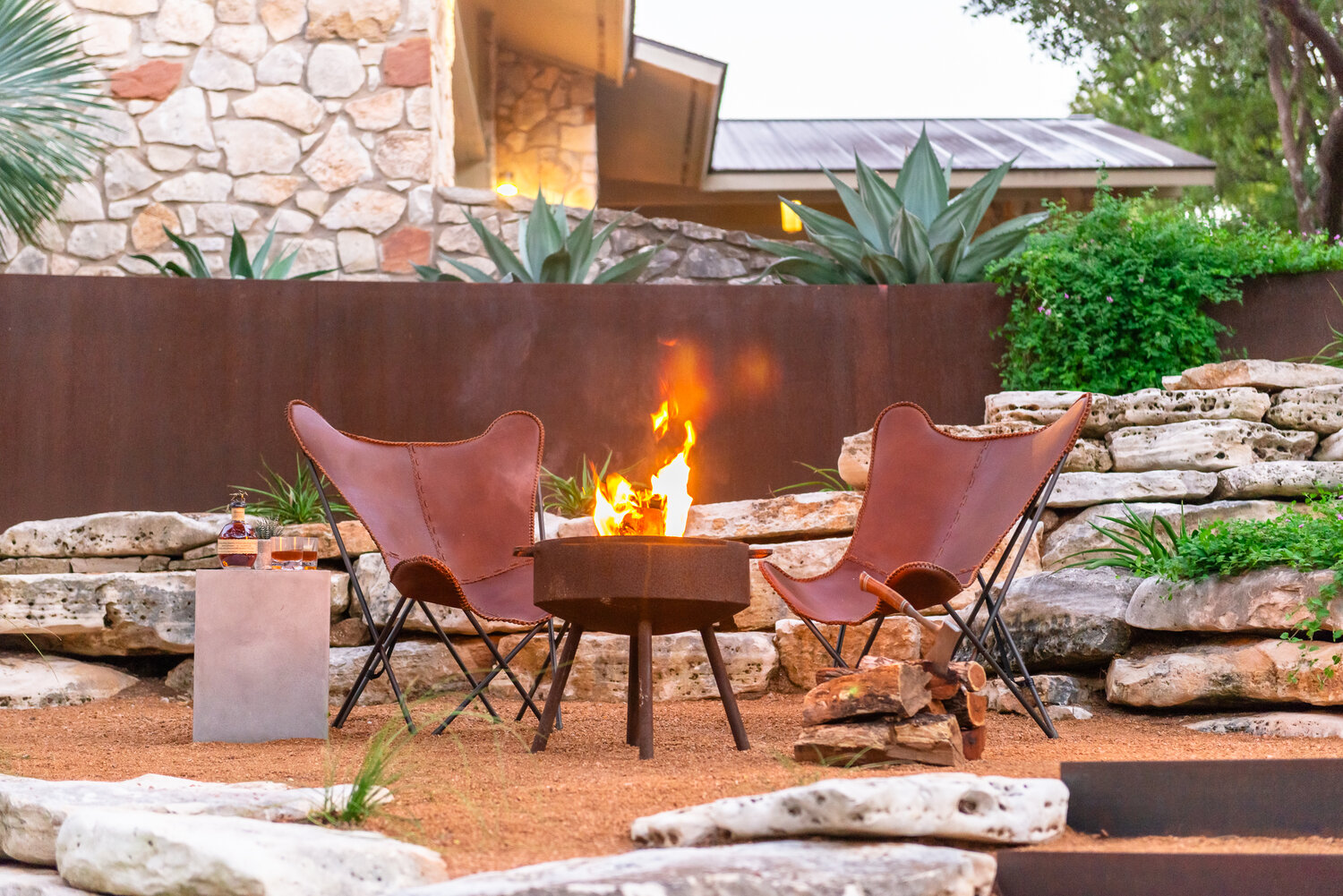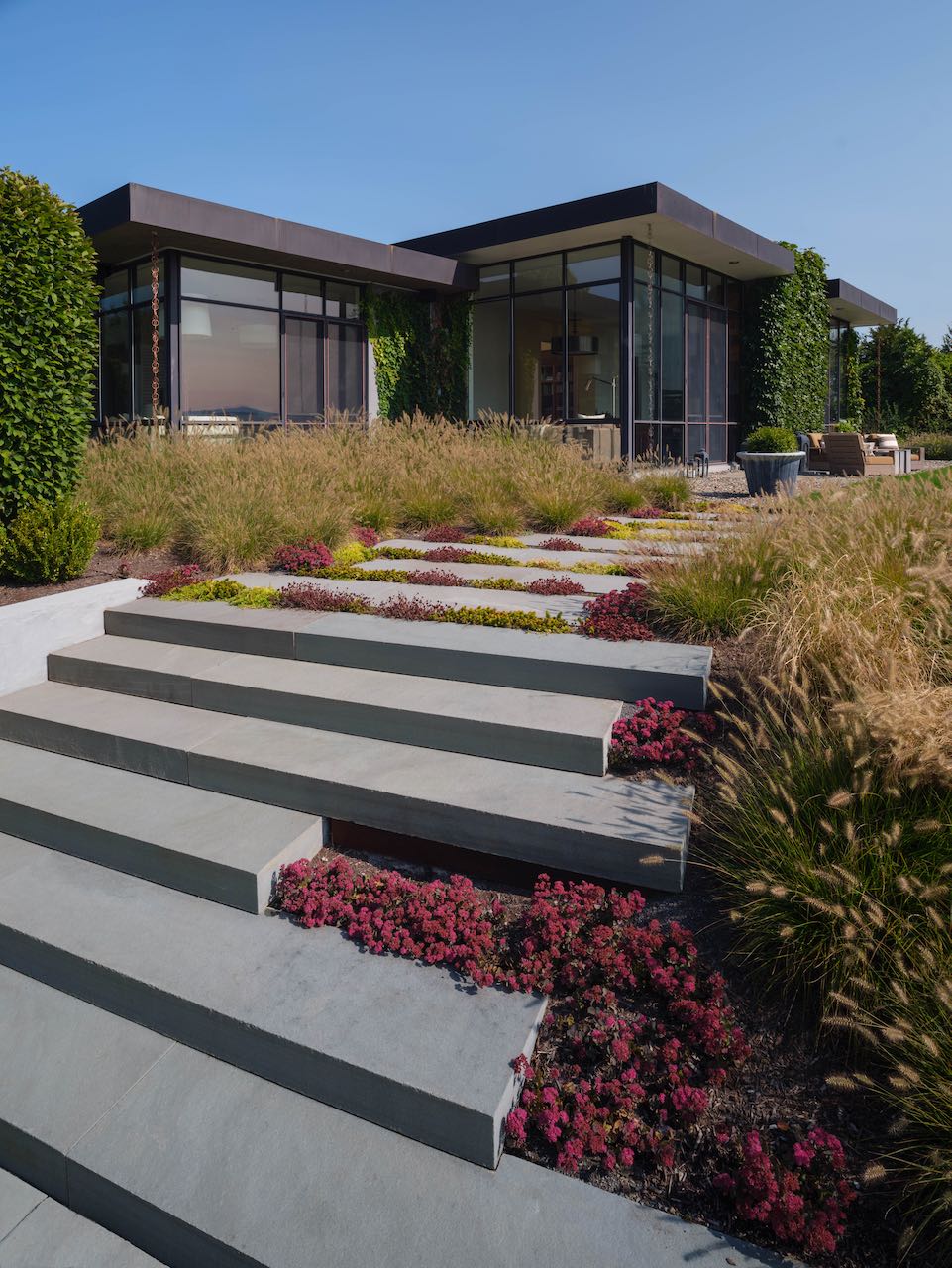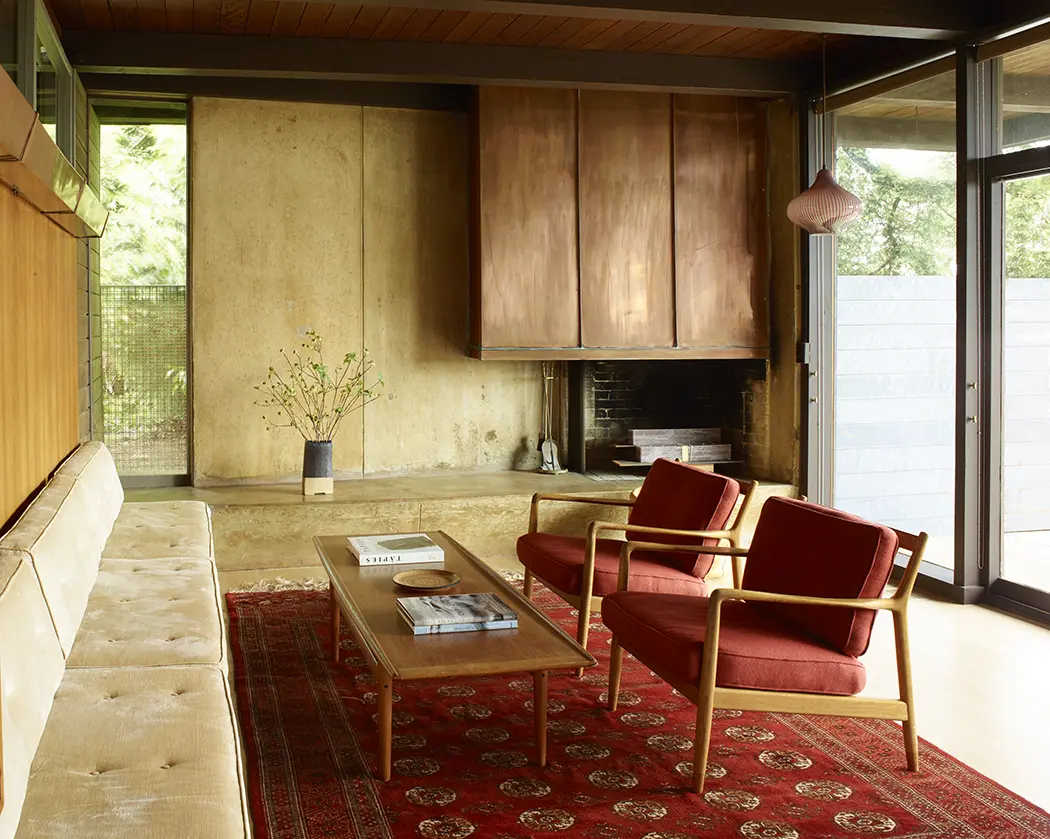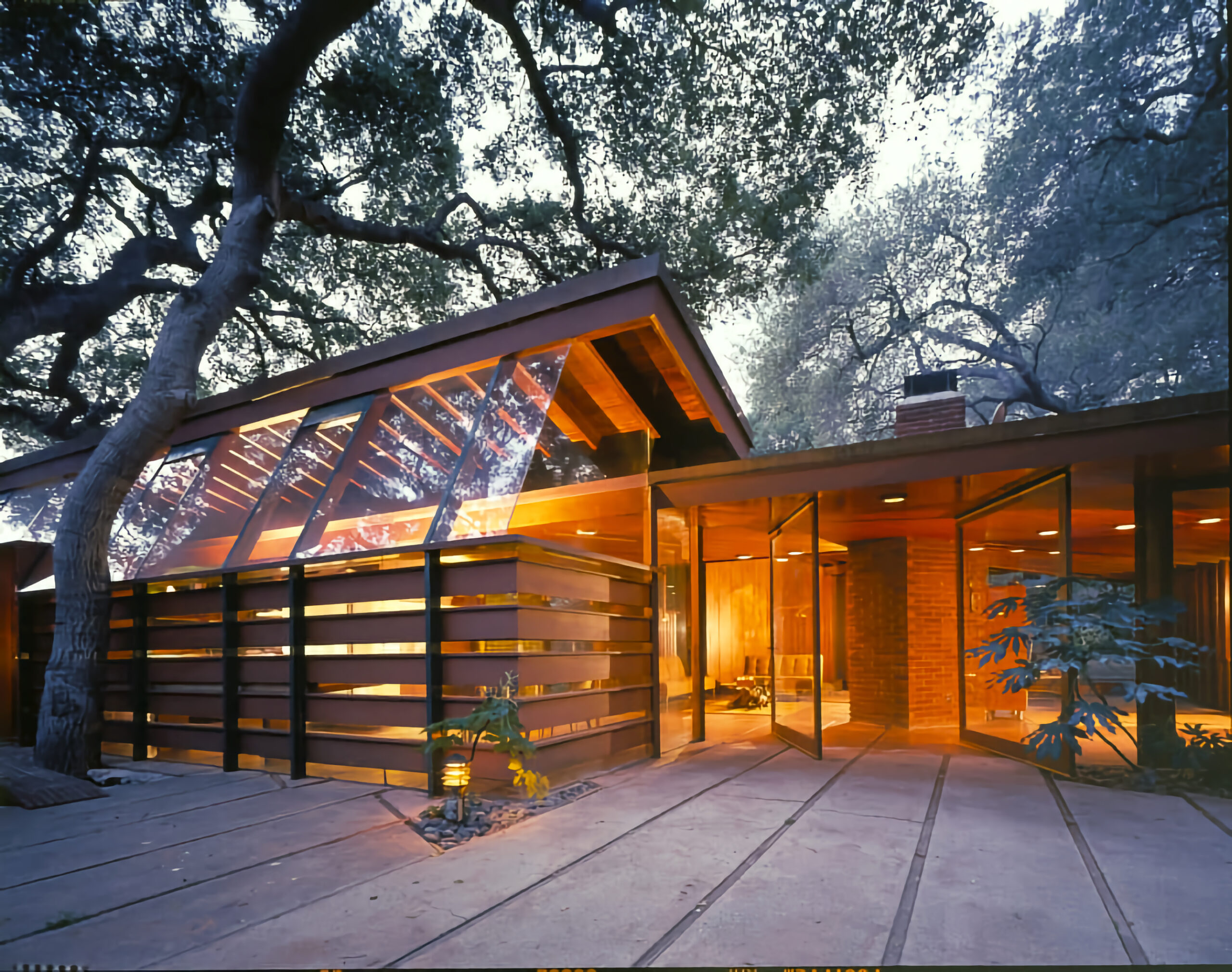
When discussing films, we usually emphasise characters, plot, and dialogue. But what about architecture? Tom Ford’s 2009 film, A Single Man, brilliantly demonstrates how mid-century modern architecture can become an essential storytelling tool.
Set in 1962 Los Angeles, A Single Man portrays one crucial day in the life of George Falconer, played by Colin Firth, an English professor dealing with profound grief. Director Tom Ford purposefully utilises mid-century architecture, particularly the iconic Schaffer Residence designed by renowned architect John Lautner in 1949, to reflect George’s internal struggles and emotional isolation.
The Schaffer Residence, featuring large glass walls, exposed beams, and an open floor plan, visually symbolises George’s vulnerability. Scenes often position George against transparent glass panes, emphasising his emotional openness yet profound isolation. Lautner’s architecture intentionally mirrors George’s emotional state—transparent yet disconnected from the world around him.
A particularly significant scene shows George carefully organising his belongings, contemplating suicide. The minimalist interior design of his mid-century home—clean, orderly, and restrained—reflects his attempt to regain control amid emotional turmoil. Ford selected Lautner’s house specifically because its outward simplicity conceals complex emotional layers, paralleling George’s composed exterior and deep sadness.
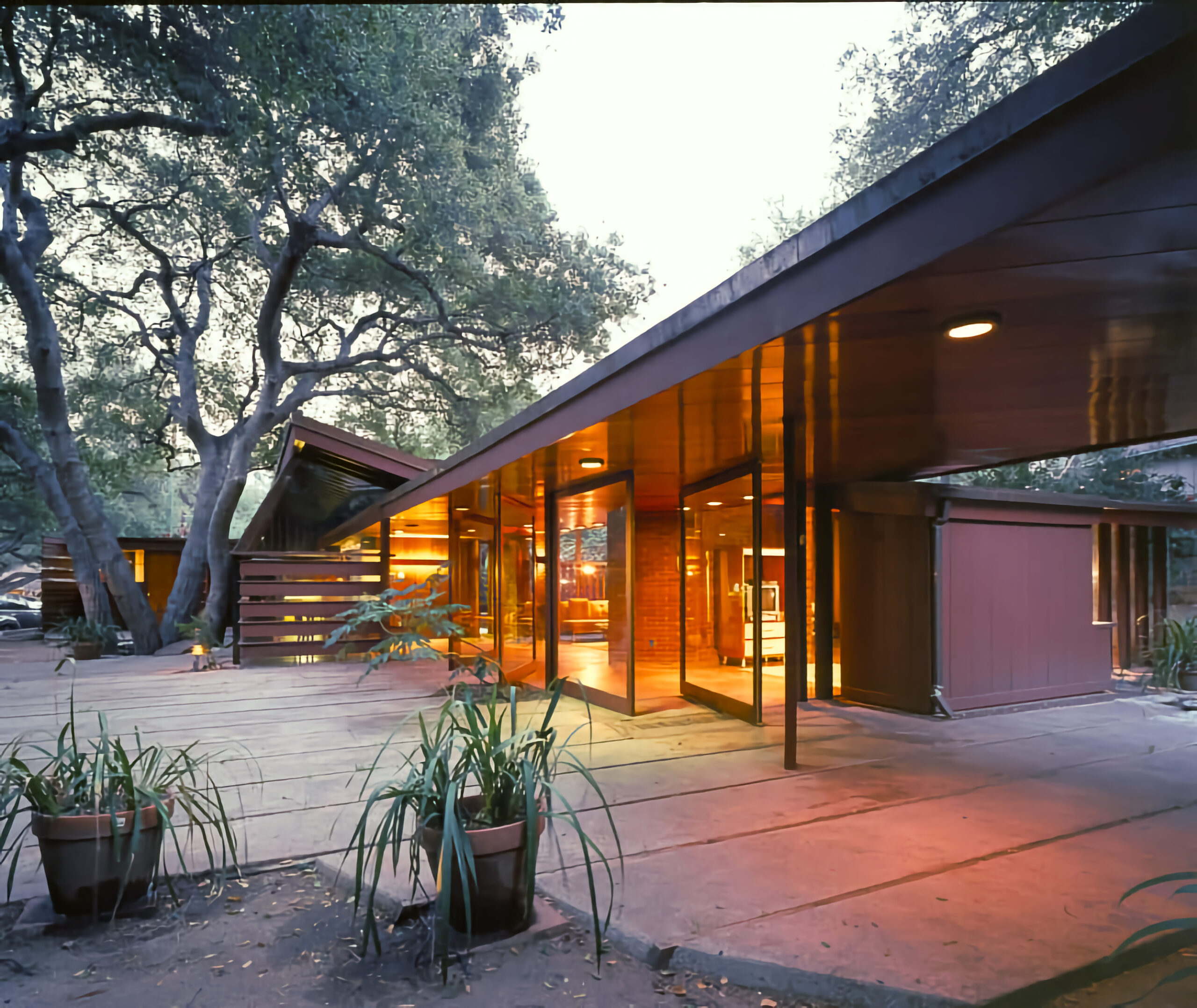
Contrasting sharply with George’s minimalist home is the Hollywood Regency style house of his friend Charley, portrayed by Julianne Moore. Charley’s home is filled with rich patterns, lavish furnishings, and ornate décor, symbolising her nostalgic and indulgent personality. Ford deliberately contrasts Charley’s vibrant interiors with George’s stark environment, visually representing their different coping mechanisms in dealing with grief and loss.
Why did Ford emphasise architecture so prominently? With his background in fashion and design, Ford appreciates how environments express emotions as powerfully as dialogue or performance. Mid-century architecture specifically captures the tension between outward simplicity and internal complexity—key themes in A Single Man. These buildings, with their precise, clear lines, often conceal deeper emotional intricacies, reflecting George’s own duality.
Through careful architectural choices, Ford illustrates how mid-century design can powerfully enhance storytelling, giving viewers a deeper understanding of character and emotion.
